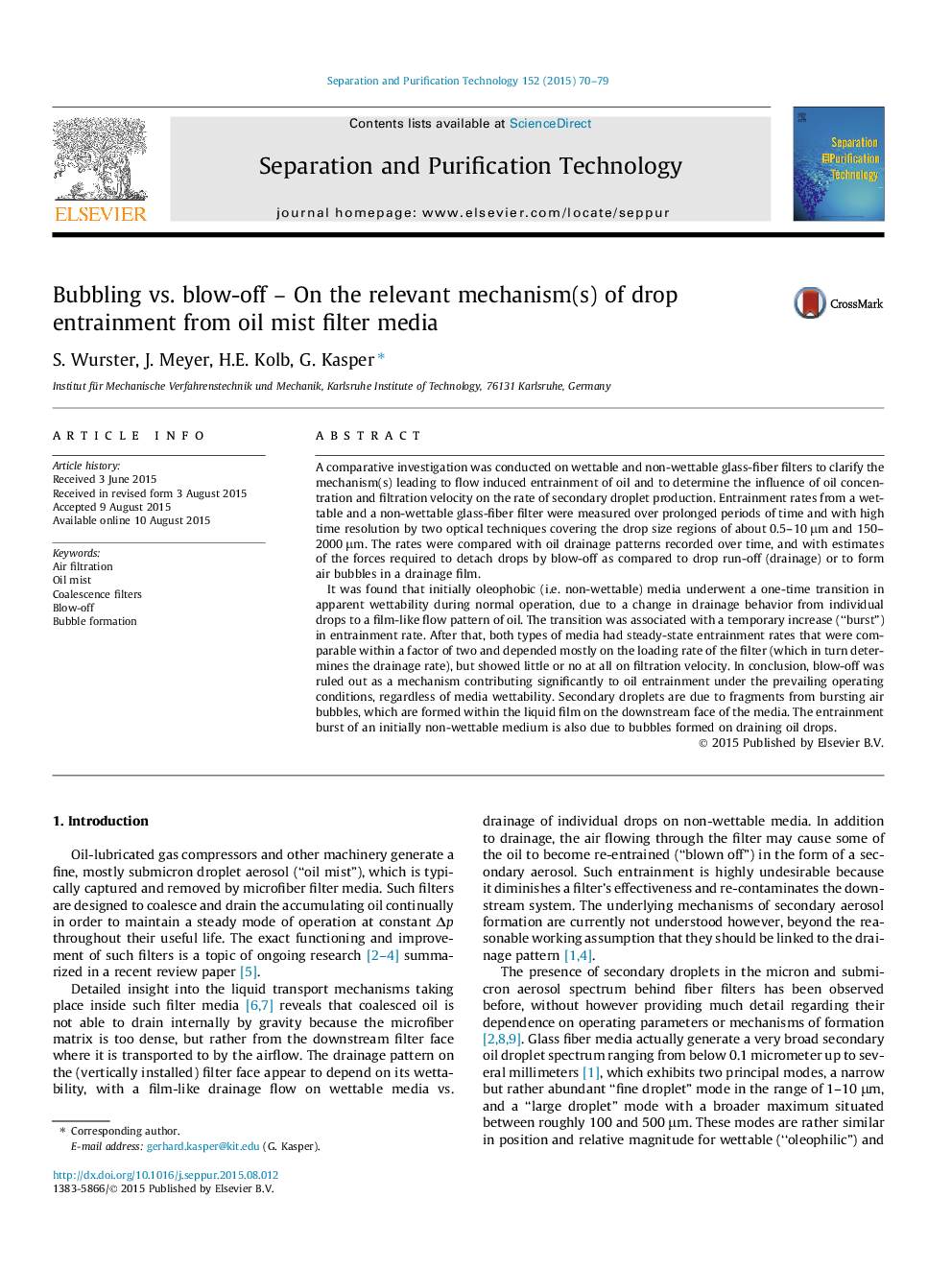| Article ID | Journal | Published Year | Pages | File Type |
|---|---|---|---|---|
| 640379 | Separation and Purification Technology | 2015 | 10 Pages |
Abstract
It was found that initially oleophobic (i.e. non-wettable) media underwent a one-time transition in apparent wettability during normal operation, due to a change in drainage behavior from individual drops to a film-like flow pattern of oil. The transition was associated with a temporary increase (“burst”) in entrainment rate. After that, both types of media had steady-state entrainment rates that were comparable within a factor of two and depended mostly on the loading rate of the filter (which in turn determines the drainage rate), but showed little or no at all on filtration velocity. In conclusion, blow-off was ruled out as a mechanism contributing significantly to oil entrainment under the prevailing operating conditions, regardless of media wettability. Secondary droplets are due to fragments from bursting air bubbles, which are formed within the liquid film on the downstream face of the media. The entrainment burst of an initially non-wettable medium is also due to bubbles formed on draining oil drops.
Related Topics
Physical Sciences and Engineering
Chemical Engineering
Filtration and Separation
Authors
S. Wurster, J. Meyer, H.E. Kolb, G. Kasper,
